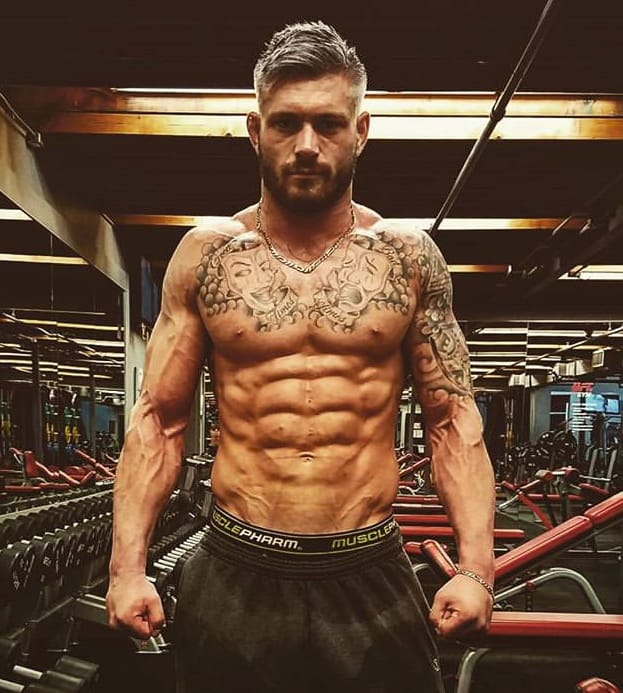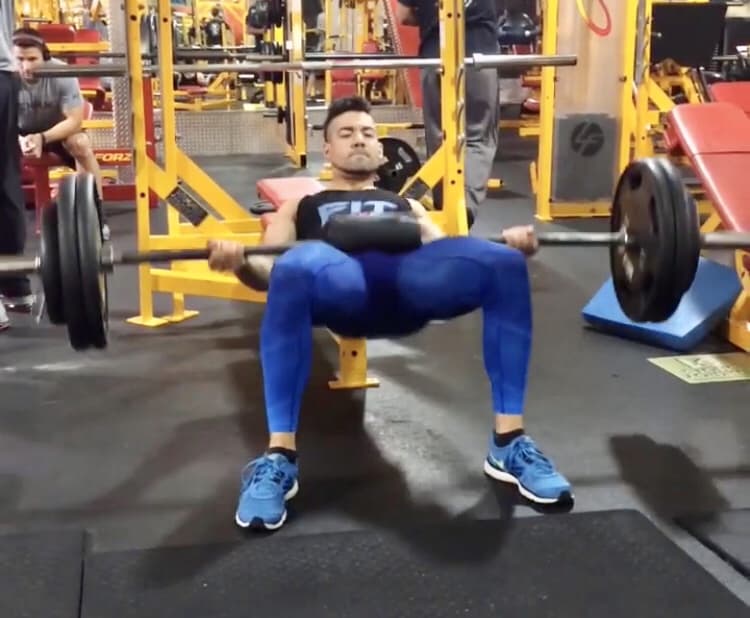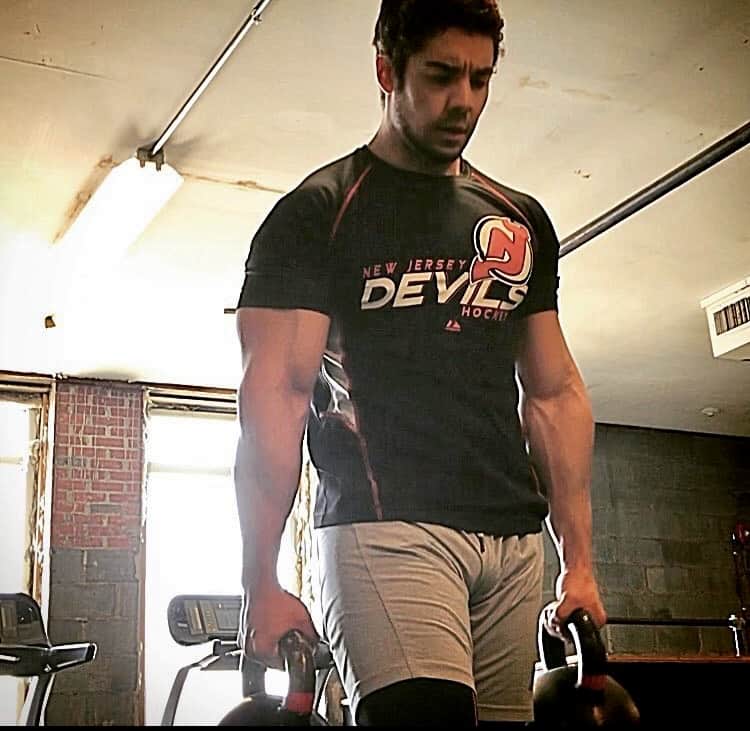
For most strength and conditioning coaches, the concept of sport specific training involves overthinking and a routine full of gimmicky exercises that do not yield results. There is too much balancing on bosu balls and not enough emphasis put on strength development. Strength and power are critical components of any anaerobic sport. It’s part of the reason why we have weight classes in wrestling, jiu jitsu, mixed martial arts, and boxing.
Certain variables in sport are largely based on genetics, like body structure and athleticism. If someone is athletic, they’ve likely been athletic their entire lives, it’s very hard to make significant improvements. Strength and power, on the other hand, can be improved significantly which can translate to better performance on the mat.
Strength is the ability to apply force while power is the ability to apply strength quickly. If you’ve ever studied exercise science, you may have seen the equation power = force x velocity.
Jiu jitsu is a unique blend of technique, strength, power, and conditioning. The technique comes through years of drilling and sparring, but strength can be improved relatively quickly depending on your current fitness level.
Often times a novice will be told “you’re strong” in a tongue in cheek manner by an advanced belt. Basically it’s another way of saying “you don’t know what you’re doing, but you’re strong.” However, if you look at every top jiu jitsu competitor, they are doing some level of strength training. The physiques of champions like Gordon Ryan, Vinny Magalhaes, Roger Gracie, and Romulo Barral illustrate this.
Strength and conditioning can be the difference between winning and losing when two equally proficient BJJ practitioners square off in competition. The exercises that follow are either great strength building movements, have a direct application to jiu jitsu, or both. They are in no particular order and cover all major muscle groups.
1. Deadlift
This exercise suggestion is under the assumption that the individual knows proper form. Deadlifts aren’t complex per se, but there is a checklist of 6-8 things to keep in mind when performing them (i.e. toes under the bar, back straight, drive feet into the ground, etc.). Deadlifts are a great full body movement and one of, if not the best test of strength among free weight exercises.
Jiu jitsu, particularly in the gi, is highly reliant on grips. Grip strength is a major component of the deadlift and is the limiting factor for the exercise. If you fail at deadlifting a certain weight, odds are it’s because the bar slips out of your hands rather than a lack of overall strength. But this isn’t necessarily a bad thing. Deadlifting is one of the best exercises for grip strength development even though grip strength may be the reason you don’t succeed at a given weight.
Deadlifts are an exercise that utilizes almost every posterior chain muscle group. The posterior chain simply refers to the muscles in the back of the body such as glutes, lower back, and hamstrings. These muscles are very important to maintain good posture, and we know how important posture is in jiu jitsu.
It’s not necessary, and really not advisable, to max out when deadlifting unless you really want to. The risk/reward of maxing out just isn’t worth it. Stick to reps in the 4-8 range for the most part.
2. Standing Military Press
The benefit of the military press, or shoulder press, is more about stability than the movement itself. This is why we utilize it from a standing position. Standing forces the body to use core strength to keep the body stable.
Shoulder injuries are one of the most common since the shoulder/deltoid muscles are involved in so many exercises, like all bench press variations. The deltoid muscles are relatively small, so injuries are due to overuse and too much weight. There’s no need to go super heavy on a standing military press, just go through a full range of motion and keep the back straight (i.e. don’t arch and lean back to force the weight up).
3. Glute Bridge
The glute bridge is common among female lifters, but is a great exercise for jiu jitsu practitioners for obvious reasons. This movement has the most obvious correlation to BJJ, as is simulates the bucking motion used when trying to escape a position like being mounted.
There are a few ways to implement this exercise. For overall strength, load up a barbell and roll it so that it is aligned with the hip (you may want to use a pad to protect the hip bone). Place your back against a bench, and make sure the bench is secure and. Drive your hips up while holding the bar to keep it from sliding.
For speed and explosiveness, perform the same motion but with bands across the waist instead of a heavy barbell. There will be less resistance, but choosing the right band allows for a great balance of speed while still being challenging. Using one’s body weight allows for speed, but the resistance is just your body and gravity, which isn’t enough to really yield results for an athlete over time.

4. Farmers Walk
A true strength and conditioning exercise, the farmers walk mixes grip strength and balance while also taxing the cardiovascular system. It is one of the simpler exercises there is; all you have to do is grab two heavy dumbbells or kettlebells and map out your route for how far you want to walk.
There is also a variation in which an individual holds one heavy weight while the other arm is free. This helps with balance as the body naturally wants to bend to the side holding the weight. Balance and oblique strength is necessary to keep the body level.

5. Ab Wheel
Jiu jitsu puts the body in some precarious positions. You could say it’s the essence of the sport itself. The ab wheel is a great functional tool to hit all the major muscle groups of the core, including the lower back. But it goes beyond that in its application to jiu jitsu.
In jiu jitsu, the way to block certain sweeps and maneuvers is to post the hand to the ground in an outstretched position. The ab wheel does the same. While the hand itself is not posted to the ground, the body is still in an outstretched position. By strengthening the muscles utilized in this position, you may be able to prevent sweeps and takedowns that in the past you weren’t able to.
6. Hammer Curls
Hammer curls strengthen the biceps muscles and force the body to keep the arms and elbows tight. Keeping the elbow tight to the body helps to prevent underhooks and being put in a disadvantageous position. Bicep strength is also important to stuff takedowns.
There is a variation to the hammer curl exercise that is particularly interesting for workout programs related to jiu jitsu. Much of jiu jitsu, particularly among high level grapplers, is positional stalemates. The difference may be in the individual who can hold on longer. This is where isometric holds come into play.
An isometric hold is an exercise in which there is no movement. It is a static position that still fatigues the muscle. The plank is an isometric hold. But holding the dumbbell at a fixed angle for the hammer curl is a great way to develop this unique type of strength.
One way to perform an isometric bicep curl is to simply hold the curl at a right angle for a fixed amount of time (or to failure). Another way is to set up a bench on an incline with your arm draped across, similar to a preacher curl, and perform the hold that way.
7. Pallof Press
Piggybacking off the isometric hold is the pallof press. The pallof press can be performed as a static hold or with movement. It works by tying a band around a pole, bringing it to your chest, and extended (shown below). It’s a great exercise for shoulder stability and core strength.
People might ask if they can use the cables/pulleys at the gym instead of bands. You could, but it wouldn’t be as effective. Bands are unique in the resistance increases as the band is stretched. Once you tug on the pulley and move it, the resistance is the resistance. In other words, if you stood two inches from the pulley then move two feet back, the resistance would not increase.
8. Captains of Crush Hand Grippers
These aren’t your ordinary grippers that you find in a sporting goods store. The COC hand grippers vary in resistance, but even the novice level ones are a challenge to close. As mentioned, grip strength is critical in BJJ and very few exercises rival this one. Similar to the paloff press, this exercise can be done for reps or as a static hold.
You won’t find the COC hand grippers in most gyms, but they’re reasonable priced. You can get your own here.
9. Cable Tricep Pushdowns
The tricep pushdown has a few applications to jiu jitsu. Earlier we referenced the ab wheel and using the hand to post; posting engages the triceps as well. But this particular motion is used when stuffing takedowns. To defend certain takedowns, the athlete has to push down on the head to help free his leg from the opponent. This exercise mimics that movement.
Tricep pushdowns should be performed bilaterally (two hands) and unilaterally (one hand). Bilateral tricep pushdowns can be performed with the straight bar attachment, ropes, or v-bar. Unilateral pushdowns can be performed with a handle attachment.
10. Glute Kickbacks
Hip mobility is a major factor in BJJ, especially with guard retention. Glute kickbacks can almost be considered a category of exercises rather than one. They’re a great way to loosen up the hips prior to training. Since it is a bodyweight exercise, it is more of a mobility movement then a strength movement. There just isn’t enough resistance to build considerable strength.
But that isn’t a bad thing. Different exercises serve different purposes. Glute kickbacks can be done with both internal and external knee rotation. Since the resistance isn’t high, odds are you won’t be sore from these movements. As a result, they can be done daily or at least multiple times per week.
11. Jackknife Toe Touch
The jackknife toe touch is an exercise that targets hips and abdominals. Most people associate leg raises with targeting of the lower abdominals, which is true. But there is more hip motion than perhaps realized. This is particularly true for hanging leg raises (i.e. hanging from a pull-up bar and lifting the legs).
This unique combination of hips and core makes it suitable for jiu jitsu practitioners. Additional resistance can be added by holding a weight or medicine ball in your hands. Make sure not to sacrifice form however.
12. Lunges
This final spot was reserved for either squats or lunges. You can’t go wrong with either but lunges are more appropriate for BJJ as they somewhat simulate the movement of a double leg takedown. When considering lunges and their application to jiu jitsu, it’s important to not sacrifice depth for weight.
The purpose of lunges in this situation is to develop strength in the deep stretch of the motion, where the legs are bent and the knees are hovering just above the ground. Too much weight will shorten the range of motion and defeat the purpose.
Recent Posts
There’s nothing worse than eating a big meal before training for jiu jitsu only to feel sluggish on the mats. You feel slow and lethargic during the warm up and your performance while rolling is...
Step-by-Step Nutrition Guide For All Jiu Jitsu Practitioners
As a Jiu Jitsu practitioner, everything you’ve heard about diet is probably wrong. The majority of nutrition advice pumped out through mainstream media and social media is targeted toward people...
